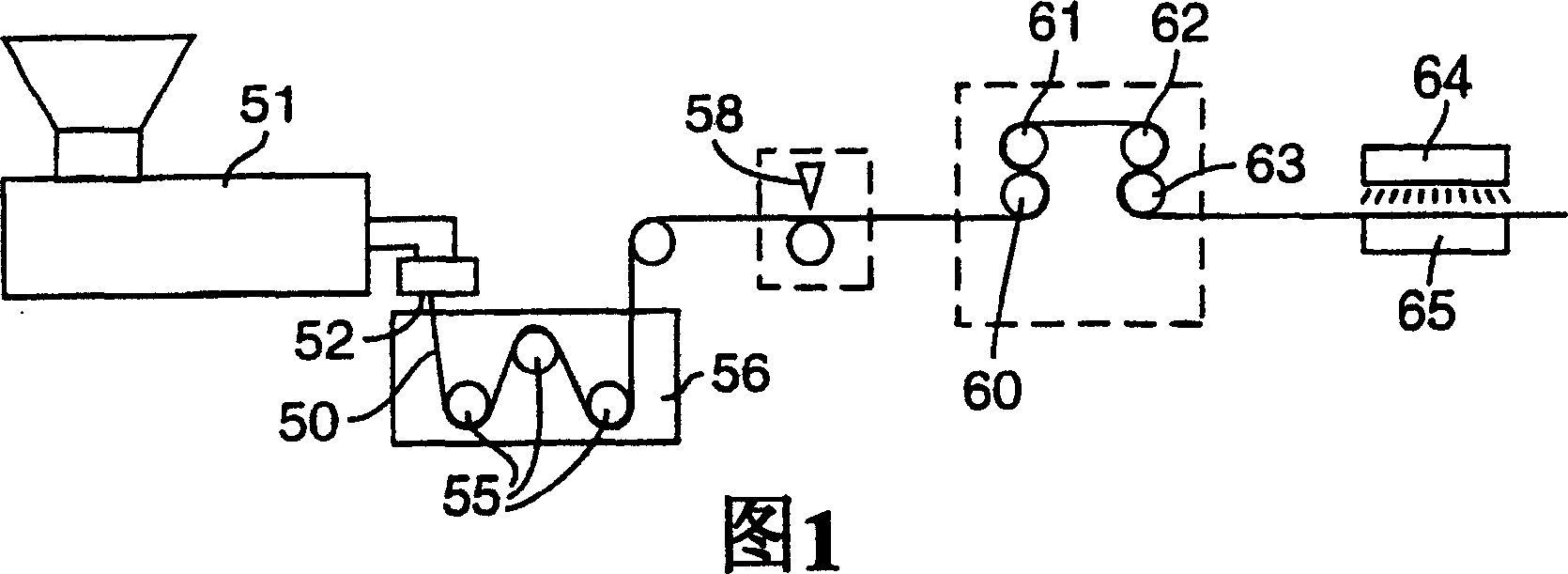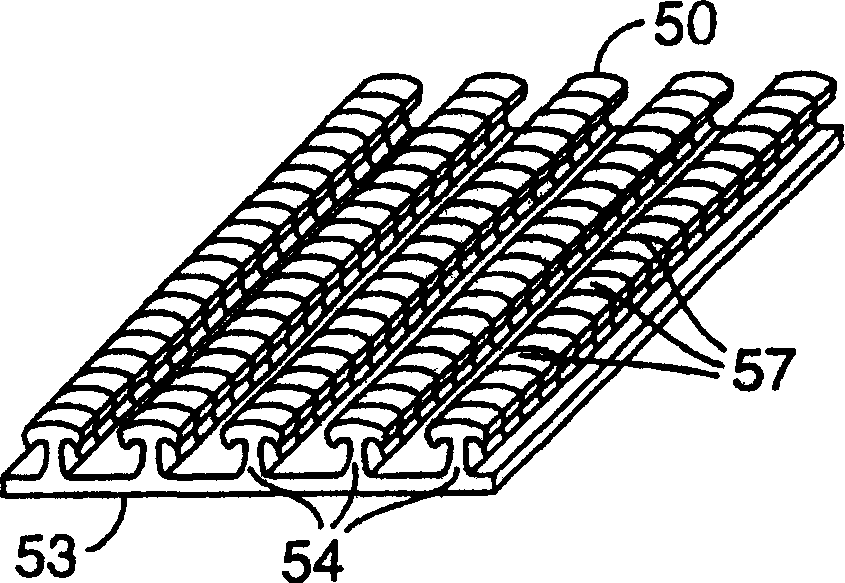Heat treated profile extruded hook
A hook-tight and hook-and-loop technology, applied in absorbent pads, clothing, applications, etc., can solve the problems of narrow extrusion direction or cutting direction of ribs, difficult speed to meet industrial production, and melting of rib cutting parts.
- Summary
- Abstract
- Description
- Claims
- Application Information
AI Technical Summary
Problems solved by technology
Method used
Image
Examples
Embodiment 1
[0075] The web of Comparative Example C1 was subjected to a non-contact heat treatment on the hook side of the web by passing the web under a 36 cm wide ribbon flame burner Aerogen (Alton Hampshire, UK) at a speed of 90 m / min , the distance between the flame torch and the film is 8mm. The flame power is 74kJ / hr. The smooth base film side of the web was placed on chilled rolls maintained at about 18°C. The overall cross-section of the resulting heat-treated hook is shown in Figures 6a and 6b. The properties of the web of hook material relative to the nonwoven loop material 'A' were measured using a 135° peel test and the results obtained are shown in Table 1 below. The peel force of the heat treated web was approximately 63% greater than that of the non-heat treated Comparative Example C1.
Embodiment 2
[0077] The web of Comparative Example C1 was subjected to non-contact heat treatment on the hook side of the web by passing the web at a speed of 2.1 m / min under a row of 6 to 1000w infrared bulbs with a wavelength of 1 μm. The distance between the hook and the bulb is about 2.5cm. The smooth base film side of the web was placed on chilled rolls maintained at about 66°C. The overall cross-section of the resulting heat-treated hook is shown in Figures 7a and 7b. The performance of the web of hook material relative to the nonwoven loop material 'A' was measured using a peel test and the results obtained are given in Table 1 below. The 135° peel force of the heat treated web was approximately 206% greater than that of the non-heat treated Comparative Example C1.
Embodiment 3
[0081] The web of Comparative Example C2 was subjected to non-contact heat treatment on the hook side of the web by passing the web at a speed of 3.0 m / min under a row of 6 to 1000 w infrared bulbs with a wavelength of 1 μm. The distance between the hook and the light bulb is about 1.6cm. The smooth base film side of the web was placed on chilled rolls maintained at about 66°C. The performance of the web of hook material relative to the nonwoven loop material 'A' was measured using a peel test and the results obtained are given in Table 1 below. The 135° peel force of the heat treated web was approximately 37% greater than that of the non-heat treated Comparative Example C2.
PUM
| Property | Measurement | Unit |
|---|---|---|
| thickness | aaaaa | aaaaa |
| width | aaaaa | aaaaa |
| thickness | aaaaa | aaaaa |
Abstract
Description
Claims
Application Information
 Login to View More
Login to View More - R&D
- Intellectual Property
- Life Sciences
- Materials
- Tech Scout
- Unparalleled Data Quality
- Higher Quality Content
- 60% Fewer Hallucinations
Browse by: Latest US Patents, China's latest patents, Technical Efficacy Thesaurus, Application Domain, Technology Topic, Popular Technical Reports.
© 2025 PatSnap. All rights reserved.Legal|Privacy policy|Modern Slavery Act Transparency Statement|Sitemap|About US| Contact US: help@patsnap.com



